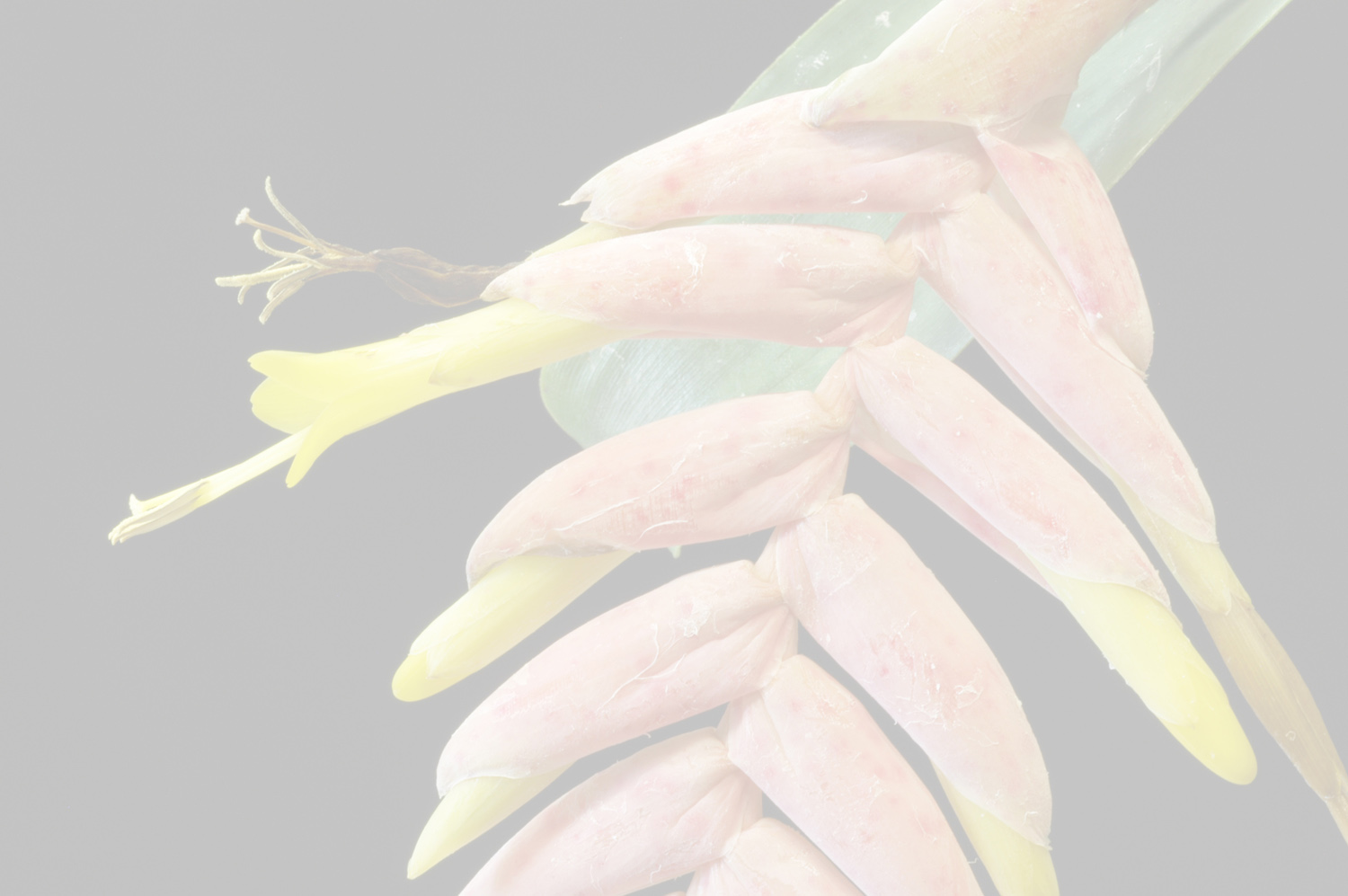

 Vriesea gastiniana Leme & G.K.Br.[as Vriesea gastiniana Leme & G. Brown]
Vriesea gastiniana Leme & G.K.Br.[as Vriesea gastiniana Leme & G. Brown]Diagnose: —A V. goniorachis (Baker) Mez, cui affinis, laminis foliorum longioribus, cinereo-viridescentibus, inflorescentia semper composita, floribus longioribus, sepalis maioribus differt. Observations: —This new species is morphologically related to V. goniorachis. However, it can be distinguished from V. goniorachis by the much larger plants with leaves forming a broader funnelform rosette, leaf blades longer (45-47 cm vs. 27-35 cm), grayish-green adaxially (vs. dark green to dark winish-purple adaxially), inflorescence always compound (vs. simple), flowers longer (ca. 60 mm vs. ca. 45 mm), and by larger sepals (ca. 30 x 20 mm vs. 26 x 18 mm). In contrast with V. goniorachis, V. gastiniana, in cultivation, seldom produces vegetative shoots during or after flowering and its propagation is only possible by means of seeds.
According to the current knowledge, its populations are not in contact with the populations of its closest relative, V. goniorachis, which is endemic to lower altitudes in the area of Rio de Janeiro city (Smith & Downs, 1977), about 150 km away.Edited from (21-10-2014): Vidalia, Revista da. (protologue) .